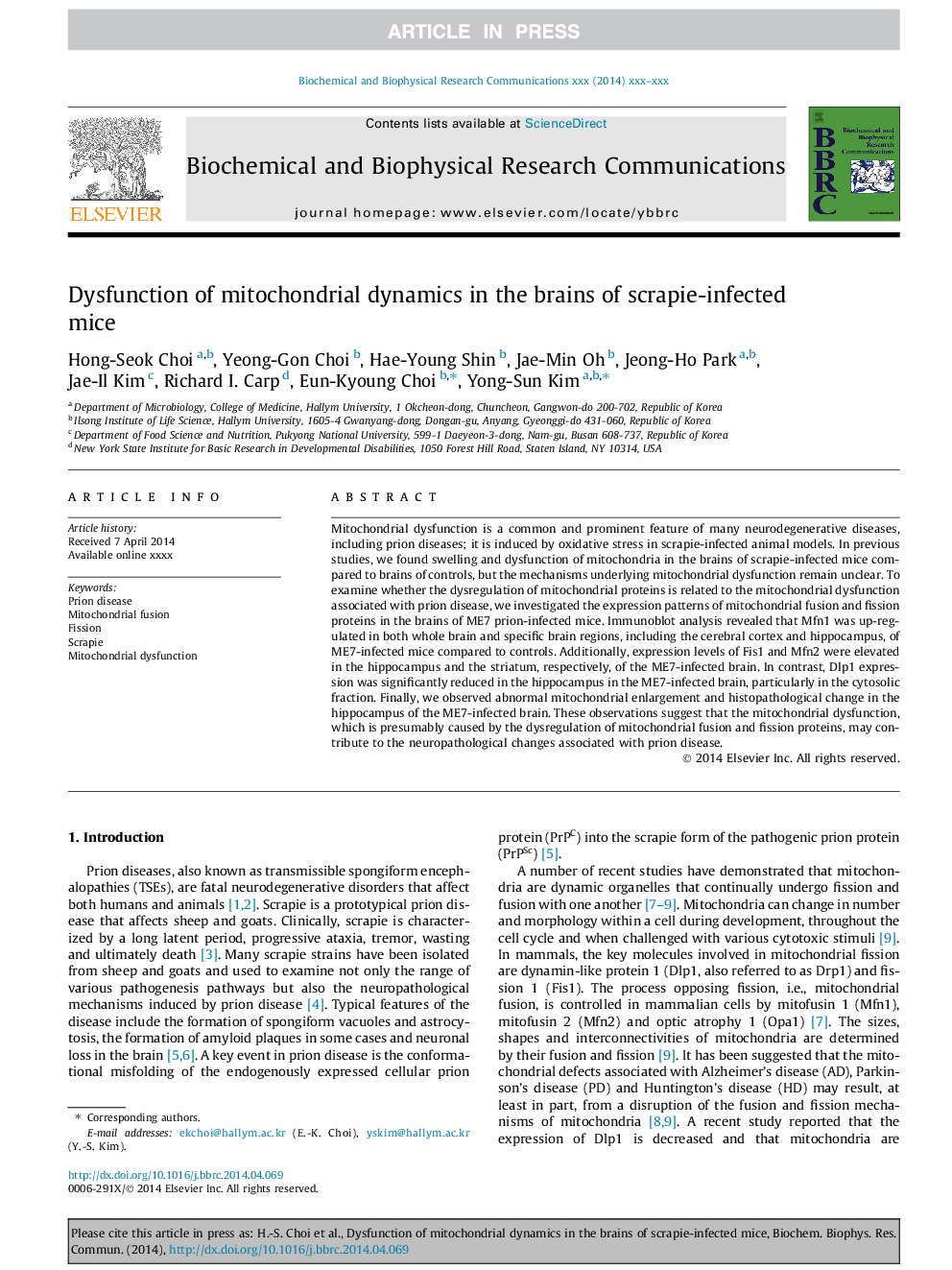| Article ID | Journal | Published Year | Pages | File Type |
|---|---|---|---|---|
| 10755128 | Biochemical and Biophysical Research Communications | 2014 | 6 Pages |
Abstract
Mitochondrial dysfunction is a common and prominent feature of many neurodegenerative diseases, including prion diseases; it is induced by oxidative stress in scrapie-infected animal models. In previous studies, we found swelling and dysfunction of mitochondria in the brains of scrapie-infected mice compared to brains of controls, but the mechanisms underlying mitochondrial dysfunction remain unclear. To examine whether the dysregulation of mitochondrial proteins is related to the mitochondrial dysfunction associated with prion disease, we investigated the expression patterns of mitochondrial fusion and fission proteins in the brains of ME7 prion-infected mice. Immunoblot analysis revealed that Mfn1 was up-regulated in both whole brain and specific brain regions, including the cerebral cortex and hippocampus, of ME7-infected mice compared to controls. Additionally, expression levels of Fis1 and Mfn2 were elevated in the hippocampus and the striatum, respectively, of the ME7-infected brain. In contrast, Dlp1 expression was significantly reduced in the hippocampus in the ME7-infected brain, particularly in the cytosolic fraction. Finally, we observed abnormal mitochondrial enlargement and histopathological change in the hippocampus of the ME7-infected brain. These observations suggest that the mitochondrial dysfunction, which is presumably caused by the dysregulation of mitochondrial fusion and fission proteins, may contribute to the neuropathological changes associated with prion disease.
Related Topics
Life Sciences
Biochemistry, Genetics and Molecular Biology
Biochemistry
Authors
Hong-Seok Choi, Yeong-Gon Choi, Hae-Young Shin, Jae-Min Oh, Jeong-Ho Park, Jae-Il Kim, Richard I. Carp, Eun-Kyoung Choi, Yong-Sun Kim,
